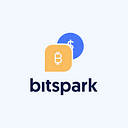List of stablecoins: best coins compared and explained
Stablecoins are designed to maintain the same value as the asset they are pegged against. While a stablecoin can be pegged to pretty much any type of asset, most stablecoins are pegged to local currencies with USD being the most popular currency. At the time of writing, the 3 biggest stablecoins in terms of market cap are Tether ($4.06B), USDC ($$ 424.29M) and TrueUSD ($ 194.27M)
All of these stablecoins are pegged to the US dollar. That peg is maintained either by a backing of local currency reserves or crypto reserves. Read our stablecoins guide to dive deeper into how this works.
With this design, stablecoins very much resemble cash but in a digital way. It is digital cash designed for spending; custody and security lies with the direct owner; and payments can be made directly between two people without the need for intermediaries.
With companies like Facebook and Walmart, and central banks of various countries getting in the stablecoin game, the market for stablecoins is growing at an incredible rate as more companies and people create, accept and use stablecoins for everyday use.
So with this list of stablecoins, let’s take a look at what’s available today.
List of stablecoins
On this list of stablecoins you’ll find:
Tether
Tether is perhaps the most well-known stablecoin, for both good and bad reasons. Tether is simply the most used stablecoin accepted by most exchanges with by far the highest market cap of all coins at $4.06B at the time of writing. At the same time, the coin has seen controversial times with questions around the integrity of its USD reserves used to maintain the USD peg for USDT.
USD Coin
USDC is a US dollar stablecoin created by Coinbase. Each USD Coin is backed by one US dollar, held in a dedicated bank account. USDC is an Ethereum token which means you can store the coins in wallets compatible with Ethereum. Next to Coinbase, you can trade USDC on Poloniex, Binance, OKEX, Bitfinex and many more.
True USD
Pegged to the US dollar, True USD was created by TrustToken and is backed by a reserve of US dollars which is held in an escrowed bank account. TUSD is available on over 70 crypto exchanges, 160 markets and 20 OTC desks.
Next to USD, TrustToken has created many more stablecoins for different local currencies. Currently, the family of stablecoins include:
- TrueGBP, for British pound
- TrueAUD, for Australian dollar
- TrueCAD, for Canadian dollar
- TrueHKD, for Hong Kong dollar
- TrueSGD, for Singaporean dollar
PAXOS Standard Token
The PAX token was issued by the Paxos Trust Company, pegged to the US dollar it is backed by USD reserves. Paxos is approved and regulated by the New York State Department of Financial Services and as an ERC20 token it is listed and supported on most of the crypto exchanges, OTC desks and wallets that support Ethereum.
Gemini Dollar
The Gemini dollar was the world’s first regulated stablecoin. It was launched by the Winklevoss twins, co-founders of the Gemini exchange, and today the stablecoin is issued by the Gemini Trust company with its USD reserves audited monthly by BPM LLP, a registered public accounting firm, to verify the 1:1 US dollar peg. When Facebook announced its own stablecoin project called Libra, Gemini was often mentioned as one of the existing stablecoins that could be affected by Libra, most likely because the founders of both projects have a contentious history in Facebook’s early days.
DAI
DAI is a stablecoin related to the MakerDAO project. Like most other stablecoins on this list, is also pegged to the USD but instead of being backed by USD reserves, it is backed by ETH reserves — in fact, an excess of ETH to guarantee the ratio during market volatility.
The peg is maintained by using smart contracts that regulate the ETH reserves, meaning that at any point in time, 1 DAI can be exchanged for 1 US dollar worth of ETH.
Stasis Eurs
Stasis Eurs is the first stablecoin for euro, and was created by the Stasis Foundation based in Malta. The token is supported by an ecosystem of liquidity providers, custodians, exchanges and payment platforms. The euro peg is maintained by EUR reserves, with daily, weekly and annual audit reports available on their website.
BitUSD
BitUSD was launched in 2014, making it the first stablecoin ever created. The stablecoin is issued on the BitShares blockchain and is backed by BitShares’ core token BTS, locked in a smart contract on the blockchain.
Behind every BitUSD, there is an amount of BTS that can only be accessed in exchange for BitUSD. This total amount of BTS collateral is at least two times the total value of BitUSD issued, to make sure the USD peg holds during times of market volatility.
Besides BitUSD, there are many more stablecoins created in the same way on the BitShares blockchain, with the most popular being BitCNY (Chinese Yuan), BitJPY (Japanese yen), BitGold (gold), BitEUR (euro) and BitGBP (Biritsh pound).
Sparkdex.HKD
This was the first stablecoin created for the Hong Kong dollar. The stablecoin is pegged by HKD reserves held in vaults with auditable records available here. The HKD stablecoin is supported across Bitspark’s products and services including Sparkdex, web platform and mobile app. It is mostly used as bridge cryptocurrency to buy and sell crypto like BTC and ETH using HKD cash. This is done through cash trades at Cash Points affiliated with Bitspark in Hong Kong.
Stable.PHP
Stable.PHP is the first stablecoin created for the Philippine peso. The Philippines has a sizeable bitcoin market not only from remittances (money sent back home from workers abroad), but also domestically as crypto gains hold in the mainstream market. This stablecoin serves that market, making it possible for more people in The Philippines to access the wider world of crypto using stable.PHP as a bridge currency.
The stablecoin can be bought or sold using cash at a number of affiliated shops such as Cebuana L’huillier, M. L’huillier Padala, and Palawan. Plus, in a specific region in the West of the Philippines, local residents can use stable.PHP to pay for solar electricity bills made possible by a partnership between Bitspark and Okra Solar.
Brazilian Digital Token
The Brazilian Digital Token is pegged to the Brazilian real, with reserves held in BRL to maintain that peg. The stablecoin was designed to give people based in Brazil access to bitcoin and other crypto markets, and give international crypto exchanges access to the Brazilian market. The Brazilian stablecoin is already listed on a number of foreign exchanges such as BitForex and BITTREX.
IDK
- Ticker: IDK
- Peg: Indonesian rupiah (IDR)
- Blockchain: Ethereum
IDK was designed to drive adoption of crypto in Indonesia, with the first supported trading pair being BTC/IDK. The Indonesian rupiah is a bit heavy after the comma, so the ratio for this stablecoin is 1:1,000, meaning 1 IDK can be exchanged for 1,000 IDR. The coin was created by the IDK Foundation and is currently available through Tokenomy.
PHX
UnionBank, one of the biggest banks in the Philippines, has launched its own PHP stablecoin called PHX. The announcement came shortly after the central bank of The Philippines approved UnionBank as the first commercial bank to issue its own PHP stablecoin.
UnionBank has said it’s aim is to connect rural banks across the Philippines, making interbank transactions more efficient. The reserves that guarantee the 1:1 peg are held in PHP by UnionBank.
The landscape of stablecoins
Stablecoins play a central role in our cash in, cash out services and are widely available across our products giving you easy access to a range of stablecoins pegged to local currencies, with which you can do any number of things.
As you can see on this list of stablecoins, most of the world’s stablecoins today are pegged to the US dollar. But the landscape of stablecoins is slowly branching out as more coins enter the market either pegged to different major and exotic currencies.
In fact, as Bitspark CEO George Harrap recently published in Coindesk, the next frontier for stablecoins is in exotic currencies both for creating unique trading opportunities and as a way to bring emerging markets into the fold of the global crypto economy.
With every new stablecoin available through Bitspark, you will see more trading opportunities on the Sparkdex and more locations with access to crypto through the mobile app using cash.
Originally published at https://www.bitspark.io.

